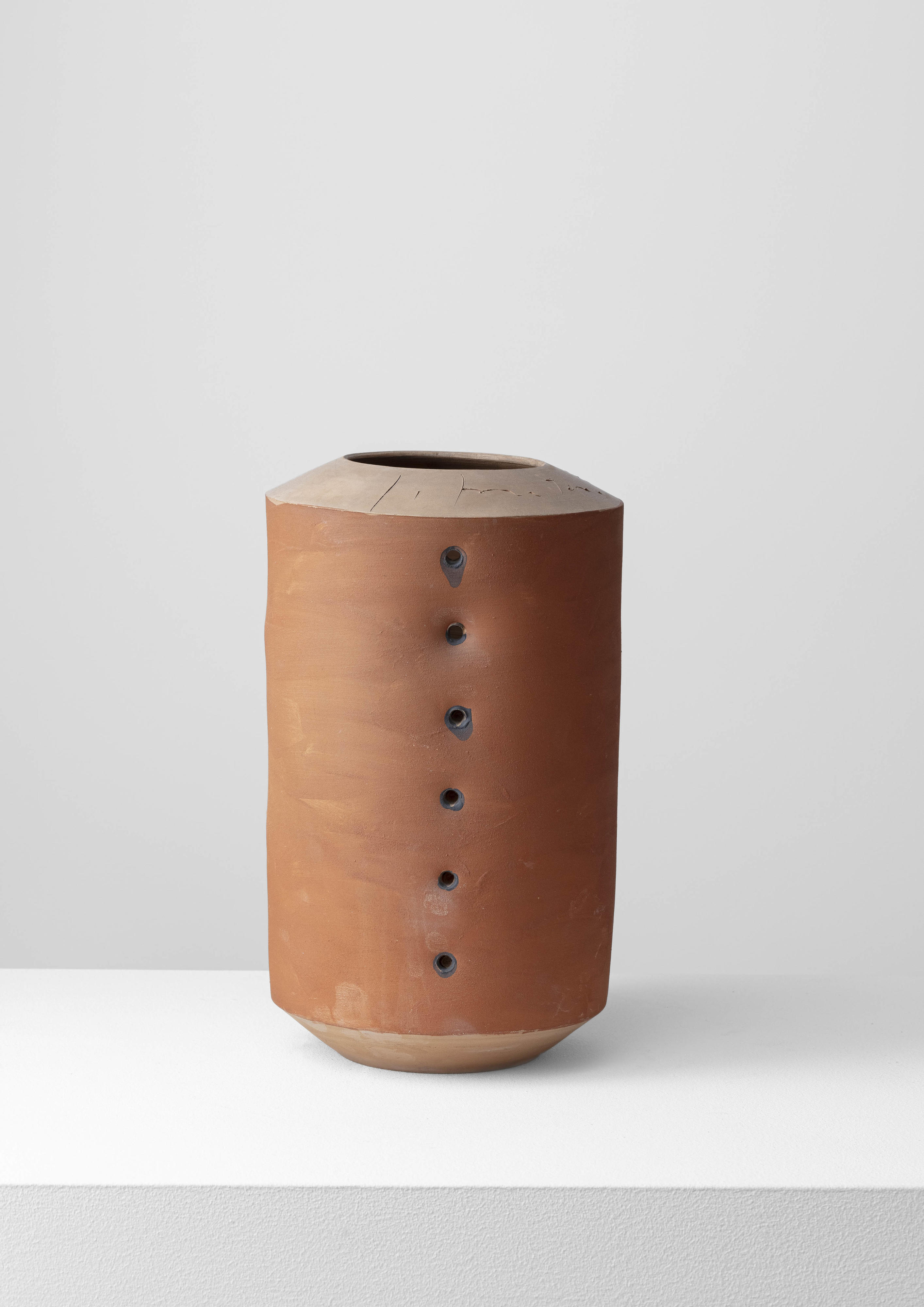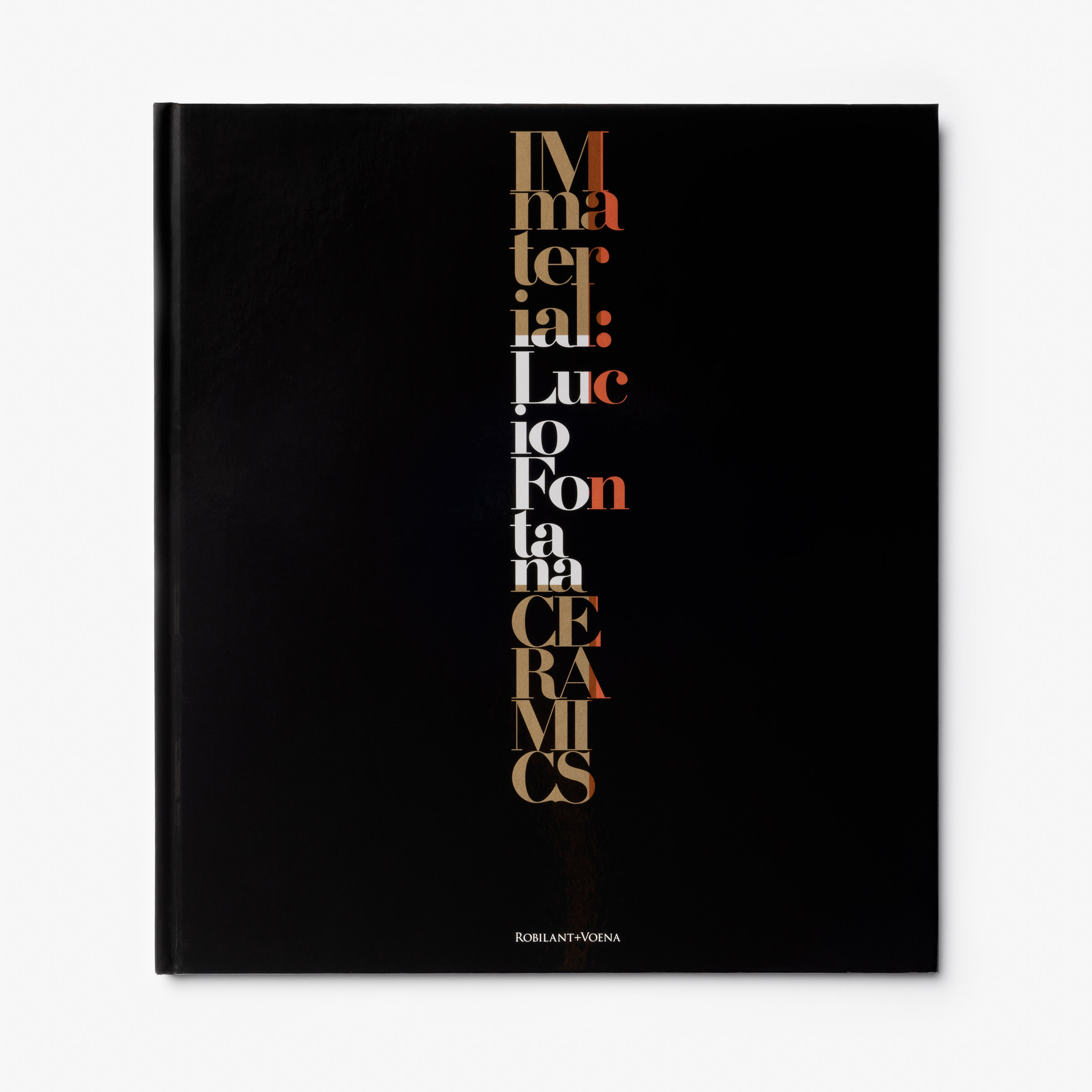Lucio Fontana
b. 1899, Rosario de Santa Fé, Argentina
d. 1968, Comabbio, Italy
Concetto Spaziale (Spatial Concept)
1957
Painted terracotta
33 x 19.5 x 19.5 cm (13 x 7 5/8 x 7 5/8 in.)
Provenance
Private collection, Milan, acquired during 1980s, and until 2017.
Literature
L. M. Barbero (ed.), Lucio Fontana: Catalogo ragionato delle sculture ceramiche, II, Milan, 2022, p. 487, illustrated, no. 57 SPC 76.
Description
“I am a sculptor, not a ceramicist. I have never thrown a plate on the wheel, nor painted a vase.”—Lucio Fontana
Although perhaps best known for his signature slashed canvases, Lucio Fontana’s artistic production was in fact far richer and more varied. Fontana began to puncture his canvases with holes (or buchi) around 1949, and then concurrently repeated the gesture in his ceramic works. In one regard, the holes simply mark the movement of the artist’s hand, much like the brushwork in Abstract Expressionist painting. Yet for Fontana the perforations were more significant—by literally ripping into the pictorial surface, Fontana opened up the picture plane, the space occupied by the viewer, to the space that lies beyond. Fontana understood this gesture and its result as a penetration into the limitless possibilities of a boundless universe, stating “I make a hole…and from there I enter into infinity.”
Fontana applied his buchi not simply to canvas and ceramic surfaces, but also to more quotidian objects, from evening dresses and jewellery to decorative domestic objects. The present work, which takes the form of a vase punctured with vertical lines of buchi, is at once a sculpture and a functional piece of decorative art, exemplifies the artist’s negation of a distinction between high and low, aesthetic and practical, typical of the avant-garde. Fontana’s ceramics, one critic has noted, “become alive in the hinc et nunc of both creation and daily use.” In other words, for the artist the aesthetic experience must coincide with lived life itself. Thus, the artwork becomes part of daily routine in order to be a constant source of pleasure for its viewers.
This particular piece was realised in Albisola, in the ceramic manufactory of Tullio Mazzotti. Mazzotti had been the sponsor of, and manufacturer for, many Italian Futurists, and Fontana collaborated with him for his ceramic pieces from the 1930s onwards.








